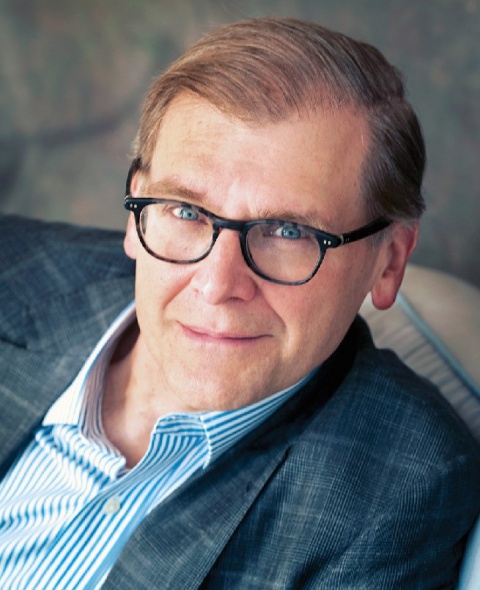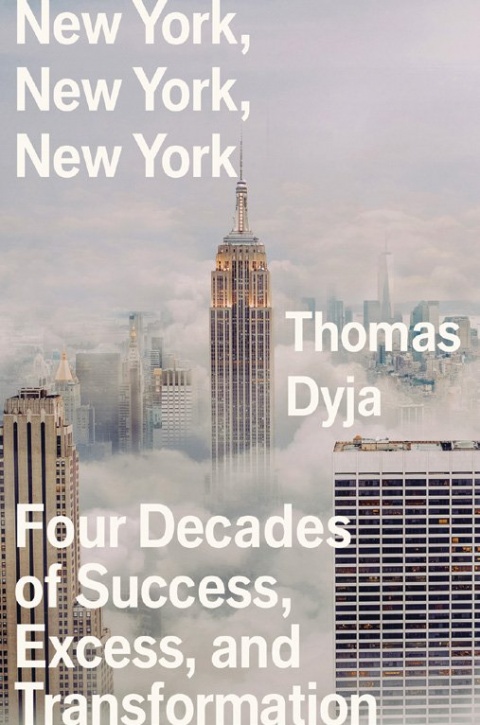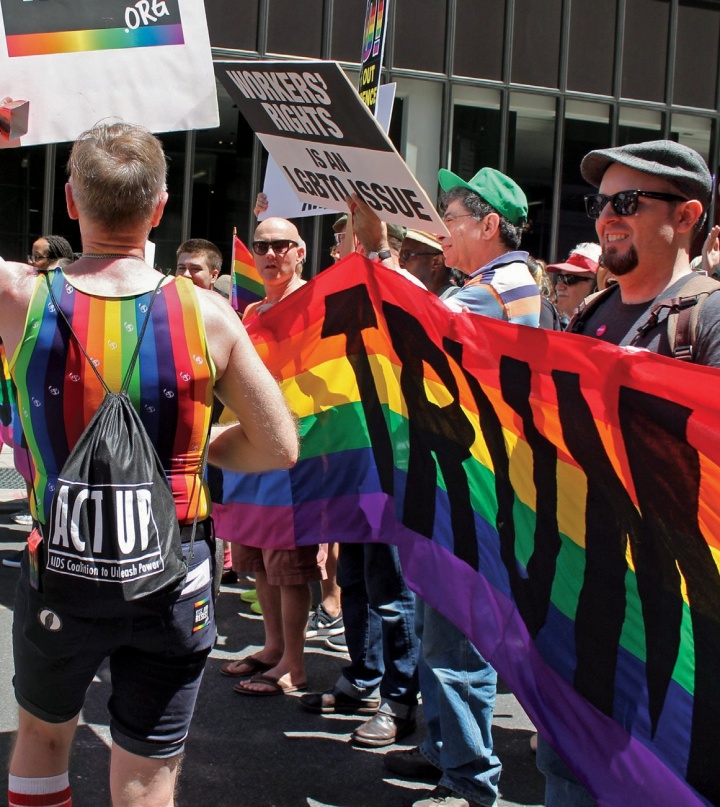A historian takes a deep dive into the last four decades of New York’s metamorphosis.
Columbia College | Columbia University in the City of New York
A historian takes a deep dive into the last four decades of New York’s metamorphosis.

Thomas Dyja ’84
New York, New York, New York: Four Decades of Success, Excess, and Transformation (Simon & Schuster, $30) covers the last 40-odd years of the city’s trajectory, from 1978 to the Covid-19 pandemic. Dyja delves into the history of the last five mayoral administrations — Koch, Dinkins, Giuliani, Bloomberg and de Blasio; and tracks New York’s metamorphosis from a dangerous, decaying nightscape — “that thrilling cesspool where anything could happen,” Dyja memorably puts it — to a luxurious Bloombergian tourist attraction that seems to be, as one reviewer says, “wealthier, healthier, safer, greener” than ever before. Dyja’s take on New York’s so-called progress is both astute and nuanced: He knows that today’s NYC is “flush with cash and full of poor people, diverse but deeply segregated, hopeful yet worryingly hollow underneath the shiny surface.”
New York, New York, New York’s panoramic narrative is studded with colorful detail; Dyja name-checks the significant cultural and political milestones of the city’s recent history, from “broken windows” policing to Yo! MTV Raps. The book took eight years to finish; his massive first draft was cut in half to produce the final product. Dyja compares the process of composing an intricate history to cooking a stew: “layering ideas and images, letting them cook and melt together,” he told CCT. Over coffee in a Morningside Heights restaurant, he shared a small section of the paper timeline he used to guide his writing process; by the end, his timeline, dense with scribbled text, had grown to eight feet long.
Dyja’s ambitious feat has been met with equally high-flown praise. A long rave from novelist Kevin Baker ’80 landed on the cover of the March 21, 2021, New York Times Book Review; Baker called it “a tour de force, a work of astonishing breadth and depth.” Dyja admits: “When I first saw it, I just sat with it for an hour. I didn’t tell anyone, didn’t call anyone. It had been such a long journey and to have this at the end was overwhelming.”
New York, New York, New York isn’t Dyja’s first city exploration. The Third Coast: When Chicago Built the American Dream (which won the Chicago Tribune’s Heartland Prize in 2013) was a highly personal book for Dyja, who grew up in a Polish working-class neighborhood on Chicago’s Northwest Side. But he feels just as close to his latest work. Dyja has spent most of his adult life in New York; he says he sees the book as “a journey of discovery of my own past and the city’s past.”
His time at the College was a crucial part of that past, especially the formative English courses he took with legendary professor Edward Said, which, Dyja says, “really opened up my brain.” Said and other professors, like George Stade GSAS’65, taught him “an enormous amount,” including the best way to eloquently and cogently frame an argument. “This book wouldn’t exist without Columbia,” he says.
Dyja isn’t certain what’s next for him — or for the city. His book ends with the devastation of the pandemic; the heartfelt epilogue is a plea for New Yorkers to address the social and economic inequality that still smolders. “We need a New York built on a bedrock of justice, not just noblesse oblige,” he writes. Despite this caveat, Dyja’s affection for the Big Apple rings out as clearly as the words of William “Holly” Whyte, the celebrated urbanist whom he quotes in the book’s epigraph, and its title. When Whyte was asked, “What are your three favorite cities?” he answered firmly: “New York, New York, New York.”
— Rose Kernochan BC’82

Snow again this morning — four inches, said the AccuWeather Forecast — after a foot and a half last week. Snow across the hundred acres of broken boards, mounds of brick, bent pipe, and garbage around Charlotte Street and Boston Road. Snow edged the sills of burnt-out apartment buildings, dusted shards of glass and mattresses left behind. There’d been some 63,000 fires in the South Bronx in the last two years; little point in plowing.
Today, Valentine’s Day 1978, was officially “I Love New York” Day.
Jimmy Carter had visited these desolate blocks last October, made thin promises as photographers focused on a landscape hopeless as the moon. We’d given up on the moon by then, along with just about everything else. Saigon had fallen; Nixon had resigned. Three decades of economic expansion had ended with a thud. Factories were closing. A dollar bought half of what it did ten years before; the speed limit, to save gas, was now a poky 55. So as America’s big, bright, exceptional promise of eternal growth blew apart, Carter had offered up Charlotte Street as a ruin so apparently complete that the rest of the failing nation could say that at least they weren’t there.

President Carter visits a desolate stretch of the South Bronx in October 1977.
ERESA ZABALA / THE NEW YORK TIMES
Then the change began. Over the next thirty-five years, three different New Yorks evolved in lurches; three very similar cities with much of the same DNA, but each bigger, faster, and sleeker than the one before, each one more merciless and beautiful. The Koch era was the Renaissance; after brutal Retrenchment came dazzling, greedy years that spiraled back down amid crack, AIDS, and a social gout of too much too fast. The next four years of David Dinkins left the city’s liberal traditions battered but laid the foundation for the safe streets and dotcom excess of Rudy Giuliani’s Reformation in the ’90s. After the planes hit on 9/11 and a brief state of grace, the shaky city handed itself over to technocratic, philanthropic billionaire Michael Bloomberg who wove City Hall into his personal empire, reimagining New York to look very much like him: visionary and strategic, driven by data and good taste, rich beyond measure, and fatally detached from those it left behind.
By New Year’s Eve 2013, when Bloomberg delivered his good-bye atop a desk in City Hall, New York had experienced the most dramatic peacetime transformation of a city since Haussmann rebuilt Paris, greener and safer than it had ever been, from Bryant Park’s lawn and the blocks of tidy homes across the South Bronx to the million-dollar brownstones in Bed-Stuy. Rumpelmayer’s and Billy’s Topless were gone, along with CBGB, subway graffiti, and that dog shit on the sidewalk. Good luck finding a place to smoke. The murder rate had dropped to a then all-time low of 333. Entire neighborhoods had been culturally, racially, economically, and physically remade; bedraggled Williamsburg was hip, Sunset Park burst with Fuzhou Chinese. Altogether some 3.6 million immigrants had come through since 1978, and 1.5 million — the entire population of Philadelphia — stayed. City Hall was solvent.
But the city of our memories, that thrilling cesspool where anything could happen, site of secret rituals officiated by Santera priests, home of dowagers on Beekman Place, refuge from everything straight and common — that city seemed to have slipped under a sea of gold. The rich were no longer rich; they were imperial. Chain stores devoured mom and pops. Camp had been domesticated; rage, sex, and high art defanged, rents out of reach, the NYPD an army. Hip Hop was mainstream, but the Twin Towers were nowhere to be found. Depending on your mood, your age, your bank account, New York was now horrifying, or wonderful, and even that changed day-to-day, moment-to-moment.
That was the fall of 2013, when I started this book, angry at the closing of Big Nick’s, a pretty lousy burger place and longtime symbol of the free-for-all character of the Upper West Side I’d moved to back in 1980. The election of progressive Bill de Blasio had surely signaled the end of an era; it was time, I thought, to sort through the facts of those years and get to the bottom of this slimy feeling I had that while so much had gone right in New York, way too much had gone wrong. Everyone had their opinions about what had happened: Some saw only villains and victims, used terms like Neoliberalism, Quality of Life, Broken Windows, and Gentrification with little sense of their original meanings, context, or applications; others told rose-colored stories about Giuliani’s cops cleaning up Dodge and Bloomberg’s enlightened reign, ignoring the profound damage done to the city and its people. Either way, four complex decades were reduced to a morality play. I wanted to get down to the actual ideas, policies, and technologies behind it all. What was the process? Who were the people?
As I researched and wrote over the next seven years, some things about the city and the world changed in remarkable ways — Donald Trump, for example, whom I’d originally seen as a bit of side comedy occasionally bursting in the door with a wacky catchphrase, became president of the United States. In other ways, the city stayed tragically the same.
Then, in a matter of days Covid-19 thrust New York back to the dark, empty streets of our memories, but this time no one was allowed to wander them. A city fueled by the energy of density, the pressure, the motion, the countless daily face-to-face interactions was suddenly frozen, and we sat helplessly listening to the sirens that never stopped. Some 17,000 New Yorkers died over three months, six times as many as died on 9/11. Hundreds of thousands lost their jobs. And then a White woman in the Central Park Ramble threatened to call the police on an African American birdwatcher, George Floyd was murdered by cops in Minneapolis, and the streets of New York burst into violent protest along with other American cities.
We no longer have the luxury of dogma, assumptions, and unexamined opinions about New York, not from any side of the many divides that separate us in this city. A fourth evolution of New York is clearly imminent; economics, public health, and social justice demand it. And that makes it crucial to learn the practical lessons of its earlier transformations. Covid has revealed cities, as nothing ever has, to be organisms built of countless intricate networks that exist to facilitate human exchange; their general health, maintenance, and momentum, their need to stay afloat through whatever hits them, transcends politics and sometimes, sadly, individual need. For us to learn anything from how New York became at once kinder and meaner, richer and poorer, more like America and less like what it had always been, we need a fine-grained look at how New Yorkers, public and private, created new methods of urban living that together saved the city, then in too many places overwhelmed it. We must confront the bitter fact that the things that brought New York back — connection, proximity, density—are exactly what sent Covid-19 burning through its streets, that too much that was objectively “good” depended on casting off, pushing aside, building upon, chewing up, and spitting out New Yorkers simply trying to make their own lives. And we must understand that the greatest challenge we will face is one that New York failed badly in its last three evolutions: the cure can’t be worse than the disease.

Activists at the 47th Gay Pride Parade marching in Midtown in June 2017.
ELVERT BARNES / WIKIMEDIA COMMONS
All these themes hang on the deeper structures of how people connect in cities. New York’s passage through Renaissance, Reformation, and Reimagination was really a shift from mass society to networks. Until the ’70s, political scientists described New York as a game played by all its interests with City Hall as the referee. But as Information took over from Industry, the collective world of unions, borough machines, the archdiocese, and even the Mob gradually gave way to one of individuals who define themselves primarily by the networks they belong to. The gameboard became what I imagine as a galaxy of 8½ million lives connected to each other in ways beyond counting: those with the most connections — and therefore the most access to favors, advice, job tips, and string pulling — shone the brightest, and the reconnection and reorganization of New Yorkers sent new tastes, ideas, resources, and behaviors coursing through every borough, unleashing financial, human, and social capital. Like a giant brain, the more connections, the more synapses ring, the higher functioning New York became. Those without wide connections, or with none at all, were left behind.
But social capital isn’t an unqualified good; a street gang can produce just as much as a congregation, and the same kinds of connections that catalyzed the response to AIDS and spread Hip Hop also produced toxic levels of social capital in Wall Street, Nouvelle Society, and post-gentrification PTAs, until, by the end of the Bloomberg years, New York was one vast web of business, government, philanthropy, and culture that exemplified the best and worst of a networked world. “[T]he larger the web gets,” writes historian William McNeill, “the more wealth, power, and inequality its participating populations exhibit.” And the more vulnerable it is to any sort of contagion, including a very nonmetaphorical virus.
The energy released by all this breaking and building of new connections, the movement between Order and Disorder, is the catalyst of urban life, the human fission that fuels a city. Though much visible effort goes into preserving Order, cities, especially democratic capitalist ones, thrive on the energies and possibilities of toggling back and forth, so how New York manages and manipulates Order and Disorder explains much of what happens during these years. Deregulation of markets, for example, creates profits by creating Disorder to speculate on; the Mob made money by enforcing Order on the Disorder of places like the Garment District and Fulton Fish Market. Hip Hop came to life out of Disorder and then became an Orderly thing, while Koch’s Housing Initiative helped create Order in neighborhoods. The most familiar example — enforcing Order in the streets and parks — touches the troubling knot at the core of the city’s transformation: Using Order to facilitate exchange between people wasn’t the same as using it to enforce oppressive, if familiar, norms about sex, race, and class. And a city without Disorder, or at least public Disorder, is barely a city at all.
That brings us to Who. Over these thirty-five years, the greatest changes were the work of New Yorkers obsessed in their own individual ways with fixing, changing, building, saving, serving the city more than their political party, social ties, or corporate affiliation. Even when it was a fig leaf for their own agendas, you still find possibility, identity, history, justice, and a sense of Home — a search for actual results, not just votes or dollars. Elizabeth Barlow Rogers was obsessed with Central Park, just as Marcy Benstock was obsessed with stopping Westway, Larry Kramer was obsessed with fighting AIDS, Jack Maple was obsessed with crime, and Reverend Johnny Ray Youngblood was obsessed with affordable housing. Everyday New Yorkers rebuilt communities by rebuilding their connections to government and to each other. What happened in these years didn’t just happen to New York; its people had agency. Not all the time and not nearly enough, but when people connected in practical, humane ways, when they participated in urban life, sometimes — many times — they found sweet spots that balanced the networks of power and money, that made us love the place even as we hated what it was becoming. Instead of standing by and watching Jane Jacobs’s street ballet, they jumped in and danced. New Yorkers rediscovered trust which, deserved or not, offered hope even as they despaired at what was lost. The greatest lesson of these thirty-five years is that keeping a city fertile demands the active, daily participation of its citizens.

Published three times a year by Columbia College for alumni, students, faculty, parents and friends.
Columbia Alumni Center
622 W. 113th St., MC 4530, 6th Fl.
New York, NY 10025
212-851-7852
cct@columbia.edu

Columbia Alumni Center
622 W. 113th St., MC 4530, 4th Fl.
New York, NY 10025
212-851-7488
ccalumni@columbia.edu